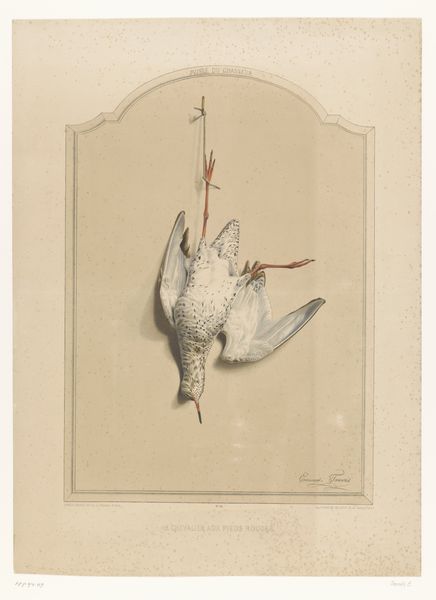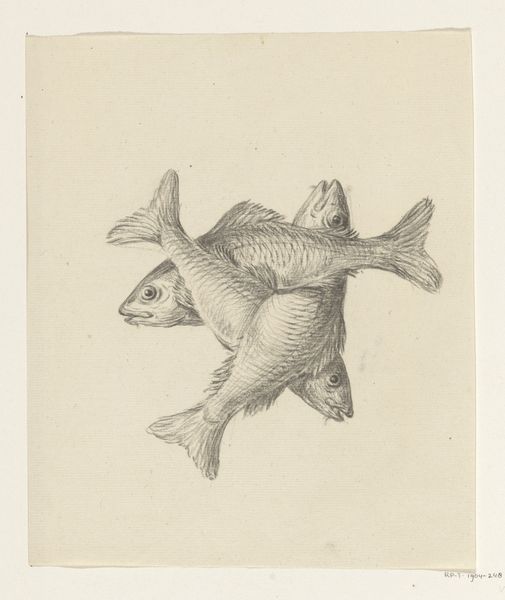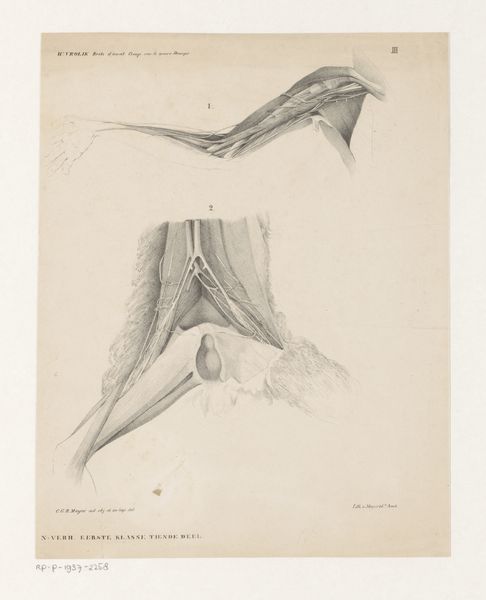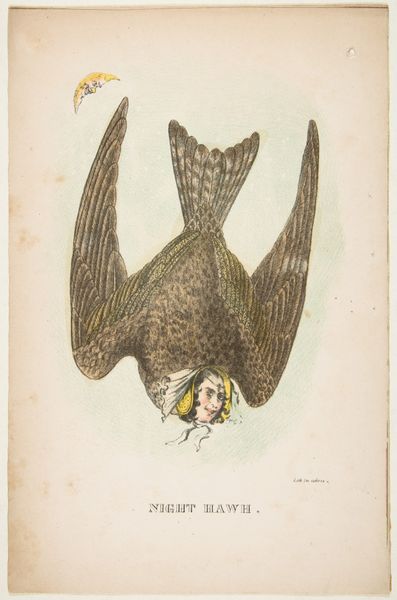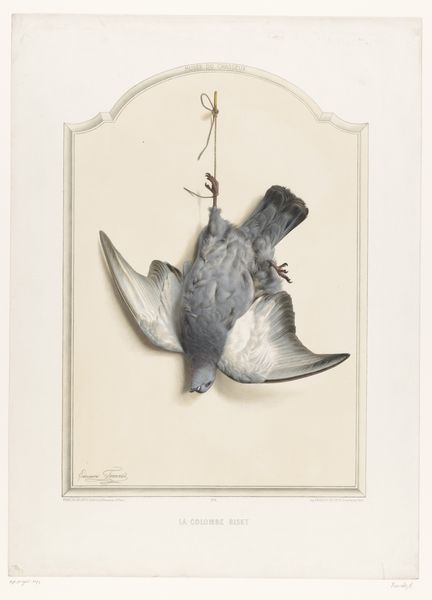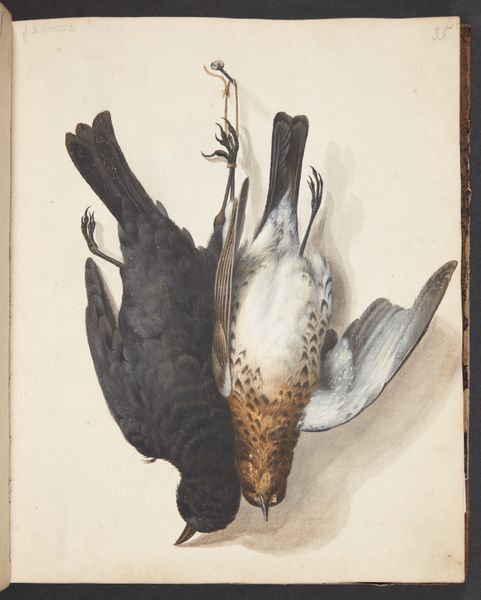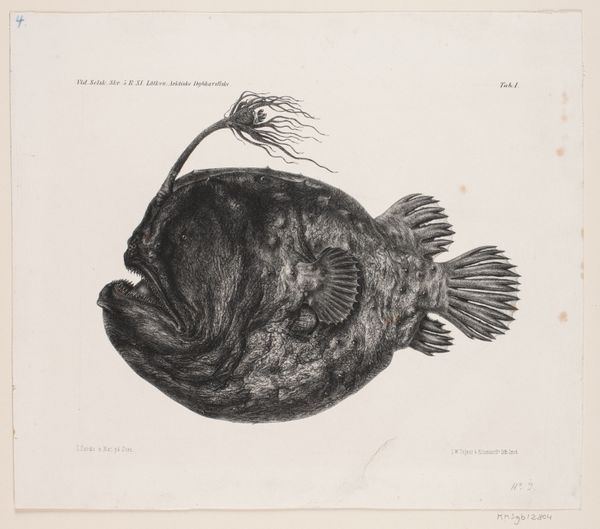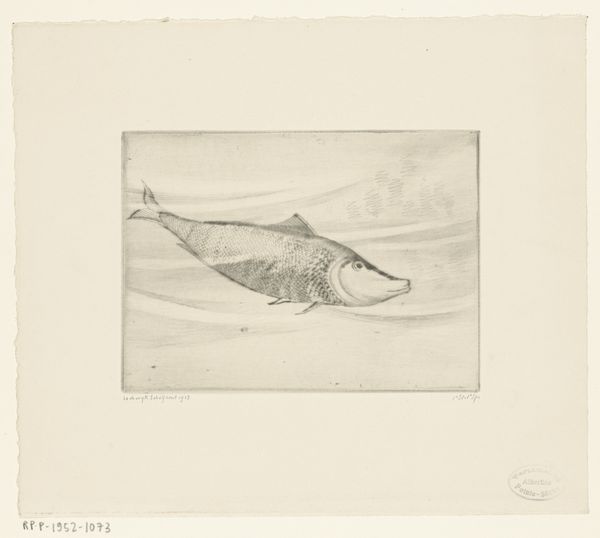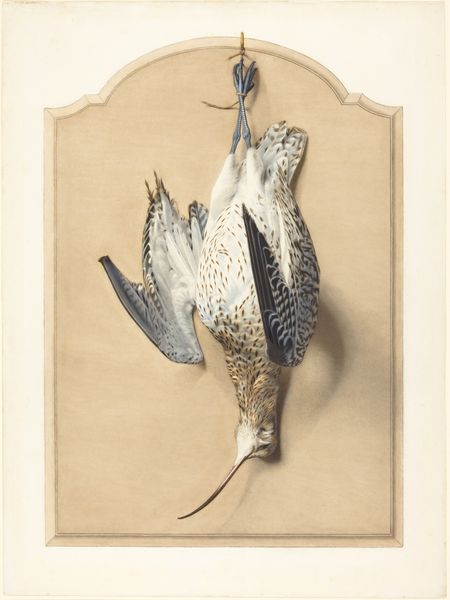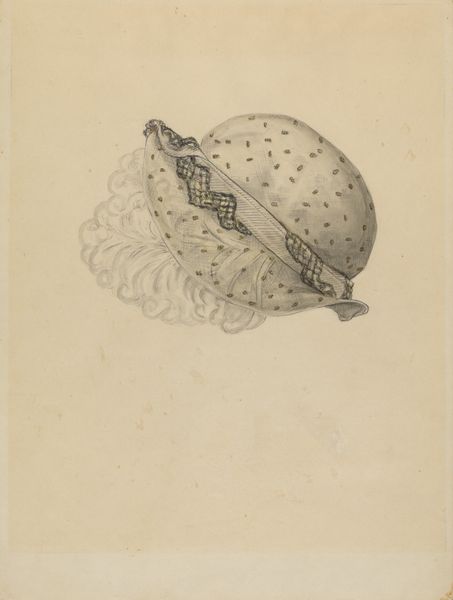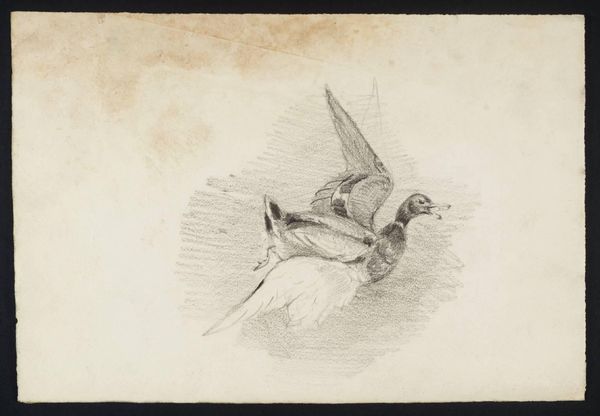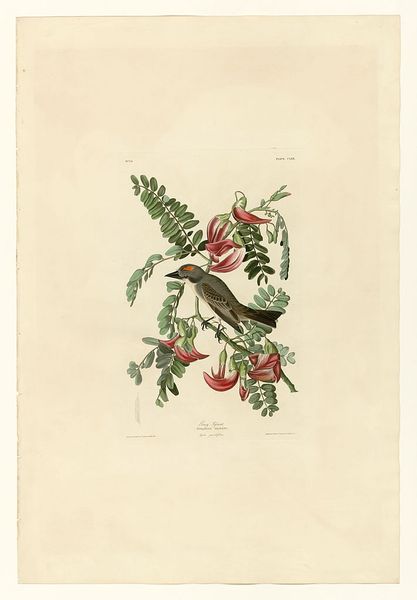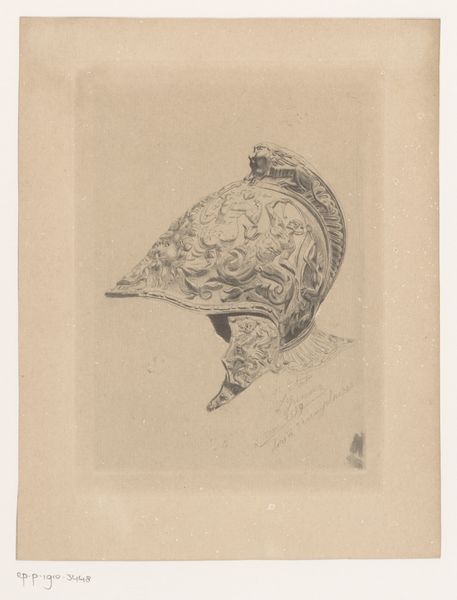
painting, print, paper, watercolor
#
painting
# print
#
bird
#
paper
#
watercolor
#
watercolour illustration
#
academic-art
#
watercolor
#
realism
Dimensions: height 680 mm, width 505 mm
Copyright: Rijks Museum: Open Domain
Édouard Traviès rendered this image of a hazel grouse sometime in the 19th century using lithography, a printmaking technique that relies on the chemical repulsion of oil and water. The process begins with a stone or metal plate, on which the artist draws with a greasy crayon. This design is then chemically fixed to the surface. When the plate is inked, the ink adheres only to the drawn areas, which are then transferred to paper under pressure. Traviès would have been drawn to lithography for its capacity to capture fine detail. The lithographic process, with its reliance on the skilled hand, mediates between the directness of drawing and the repeatability of mechanical production. Look closely, and you’ll see how Traviès exploits this duality to render the bird’s plumage with scientific precision, while also conveying the pathos of its lifeless pose. The print thus reflects the complex relationship between humans and the natural world – one of both observation and exploitation. Thinking about the making of this lithograph reminds us that even seemingly straightforward images are the result of complex technical processes, with social and cultural significance embedded in every stage.
Comments
No comments
Be the first to comment and join the conversation on the ultimate creative platform.
